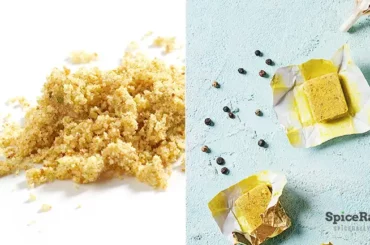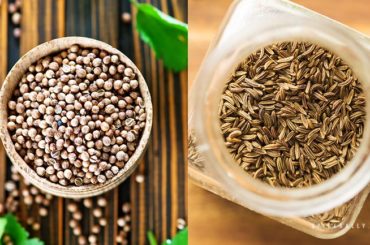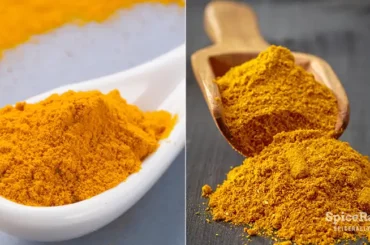Are you looking for amazing tarragon substitutes to make your recipe stand out? Some great alternatives will still give you a delicious flavor, but choosing with care will be crucial.
Some of the best substitutes for tarragon include things like..
All of these will help mimic tarragon’s flavor, but each will shine in different ways. Choosing which to use depending on the dish you make is the best way to ensure your meal tastes fantastic.

1- Dill
Dill is a readily available herb that will work well as a tarragon substitute. It has a similar taste, although it is noticeably different if you compare the two side by side. Dill is not as sweet as tarragon and does not have licorice undertones.
You may want to use a little less dill than you would tarragon, as the flavor is often stronger. Dill and tarragon smell quite similar to each other.
Dill works well as a substitute in the following dishes:
- Baked fish and tarragon
- Frittatas with tarragon
- Mustard and tarragon fish sauces
2- Marjoram
If you’re trying to replicate the earthiness of tarragon, marjoram is a good option. It lacks the aniseed flavor like dill, but it nicely replicates the woody, natural edge that tarragon brings to your food. It’s warm and flavorful.
You can use marjoram at the same ratio as tarragon, and it’s usually easy to buy or even grow. If you can’t get tarragon, marjoram will be a reasonable substitute in most cases.
Marjoram can be substituted into these delicious options:
- Sausages
- Preserved meats
- Tomato-based pasta sauces with tarragon
- Poultry dishes
3- Rosemary
Rosemary will work well if you’re looking to swap out dried tarragon, although it’s not always the best substitute for fresh tarragon. Rosemary has a strong flavor and is used in a lot of French cooking, and it’s slightly lemony, but it effectively mimics tarragon’s woody flavor.
Although it also lacks the aniseed smell, rosemary can lend your cooking that earthy scent that tarragon is famous for. This helps with robust dishes, such as roasts. It’s very easy to purchase rosemary in most stores, or it can be grown at home if you have enough room.
You’ll find rosemary a flavorful alternative to tarragon in the following dishes:
- Any meal, including potatoes
- Roasted chicken
- Tomato-based dishes, such as pasta sauce
- Roasted tomatoes
4- Chervil
Many people say this is the top replacement for tarragon, so it’s well worth looking for it if you cannot get tarragon locally. Chervil is sometimes referred to as “French parsley,” and it will work well as a substitute in many different dishes.
This is because it has a sophisticated flavor that mimics some of tarragon’s complex notes. It’s fragrant, and has a little bit of the licorice taste that makes tarragon so unique. You can use it at the same ratio and enjoy the same subtle and complicated flavor that tarragon lends to meals.
Some people refer to chervil as a hybrid between tarragon, chives, and parsley, which gives you a clue about all the different tastes woven through this herb. It smells somewhat similar to tarragon too, with a light, aniseed aroma. Both herbs are commonly found in French cooking.
Chervil works well as a tarragon substitute in many meals, including:
- Poached salmon
- Risotto
- Poached chicken
- Dressings
Check our article that covers the top 15 Must-have Spices and Herbs in American Kitchen!
5- Fennel
Licorice is one of the key flavors in tarragon, and that makes fennel a good substitute since it’s known for its licorice taste. Fennel has a distinctive aniseed flavor, and it’s stronger than tarragon’s slight hint.
You might want to use a small amount of fennel combined with some other herbs, such as rosemary, to mimic tarragon’s flavor. Substituting all of the tarragon for fennel may make your recipe taste too strongly of licorice.
If you smell fennel, you’ll find that it’s quite different from tarragon, and it doesn’t have the same woodiness or depth, even though it will work as an alternative herb.
You can use fennel instead of tarragon in any of these meals:
- Citrus-based vinaigrettes
- Light soups
- Sauces
- Pasta dishes
6- Basil
Readily available, basil is a great fallback if you don’t have access to tarragon and your spice cupboard is looking a little bare. Basil is complex and rich, and it will work well instead of tarragon in many recipes.
It manages to be both sweet and savory, with just a hint of aniseed, as well as mint and pepper. Basil lacks the bite of tarragon, but is otherwise a good substitute. You should slightly increase the amount of basil you use to make up for its milder flavor.
One of the benefits of basil is that it is very readily available, so you can easily swap out the tarragon if you don’t have it. You can get basil from almost any store, or grow it yourself on your windowsill.
Basil will serve in the following dishes as a tarragon replacement:
- Tomato-based dishes, such as pasta sauce
- Poultry dishes
- Fish, such as poached salmon
- Soups
7- Angelica
Although it’s not a common herb, it will work as a great substitute if you have access to it. Don’t use the root, however; you must replace tarragon with the leaf or stem if you want a successful swap.
Angelica contains many of the notes found in tarragon, including earthiness, sweetness, aniseed, and a hint of dill. It tastes somewhat like celery, and the licorice flavor is not too strong. This makes it an excellent substitute.
Angelica belongs to the parsley family, and looks and smells quite different from tarragon. Tarragon is probably easier to find, but if you do have angelica, it’s an excellent swap that’s well worth considering.
It will taste great instead of tarragon in meals like:
- Fishcakes
- Cauliflower cheese
- Soups
- Salads
- Seafood
Conclusion
There are quite a few viable swaps for tarragon, and you should choose depending on which flavor notes are the most important for your dish. Light herbs, such as basil, chervil, and dill will work well in sauces and salads, while rosemary and angelica will flavor heavier, more robust meals beautifully.




